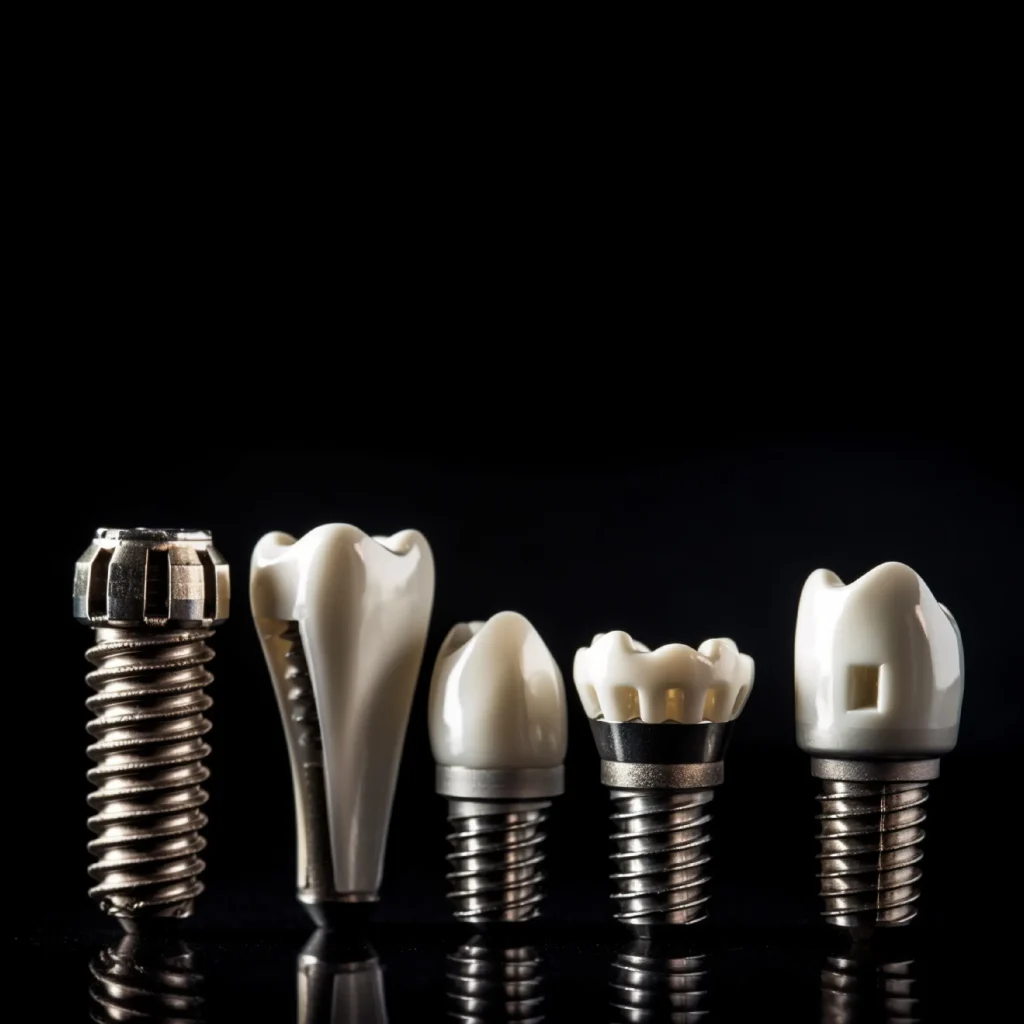In previous articles, we talked about dental implant procedures. In this article, we are going to explain their types further. There are many different types of dental implants, but the most prevalent types are endosteal and subperiosteal implants. However, the main distinction is how they are fused to your jawbone.
Endosteal implants (in the bone) are the most widely used and are mainly composed of body-safe materials, such as titanium. Generally, they are inserted into the jawbone where they take the place of the tooth roots and resemble tiny screws sticking out into the gum to hold the new tooth. An endosteal implant may be a suitable option for you if:
- You already have dentures or bridges.
- You have a healthy jawbone and gum tissue.
- You have a fully grown jawbone.
Subperiosteal implants (on the bone) This type of implant is positioned on or above the jawbone and beneath the gum. Your dentist may recommend using subperiosteal implants if you require dental implants but don’t have a healthy and strong jawbone to sustain them.

More about types of dental implants:
What is the right option for you? and how types of dental implants vary?
Depending on the condition of your jawbone, the number of missing teeth, and any other unique requirements you may have, your doctor will determine whether endosteal implants or subperiosteal implants are the best options for you.
Are dental implants everlasting?
Dental implants are meant to be everlasting. This is because they have direct contact with the jawbone and undergo a process known as osseointegration in which they join the surrounding bone tissue.
Here are some practices that will lengthen the lifespan of your dental work and your natural teeth:
- Maintain excellent oral hygiene. Keep your gum tissue, implants, and artificial teeth clean, just like you would with your natural teeth. Interdental brushes, which slip between teeth, are custom-designed brushes that can help clean the crevices and crevices surrounding teeth, gums, and metal posts.
- See your dentist regularly. To guarantee the health and effective operation of your implants, schedule dental checkups and abide by the instructions for expert cleaning.
- Stay away from bad behavior. Avoid chewing hard objects like ice and hard candies since they can crack your crowns or your natural teeth. Avoid colored drinks and cigarettes, which can discolor teeth. Get therapy if you grind your teeth.
What is the lifespan of dental implants?
Dental implants are engineered for long-term use, aiming to be a permanent solution. Their durability stems from their direct integration with the jawbone, establishing a bond with surrounding bone tissue known as osseointegration.
Upon completion of osseointegration, the implant and the adjacent bone material merge, effectively creating an artificial tooth root that provides a stable base for a prosthetic tooth.
While the implant itself is designed to endure, it’s worth noting that the crown affixed to it may require replacement over time due to normal wear and tear. Statistics indicate that approximately 50 to 80 percent of crowns may necessitate replacement within a span of 15 to 20 years.
Managing a Failed Dental Implant
In the event of implant failure, removal under local anesthesia is typically performed. In some cases, replacement of the implant is feasible. Studies indicate that the success rate for replacing single dental implants at the same site stands at approximately 71 percent.
In instances where bone loss has transpired around the implant, a bone graft might be necessary to facilitate the regeneration of bone tissue before a new implant can be inserted. This process may entail several months of waiting before the placement of the new implant.
Should you opt not to pursue or be unable to replace a failed implant, alternative treatment options exist. These may include dental bridges or dentures.
Peri-implantitis, a condition characterized by inflammation around the implant, can sometimes be managed without implant removal if significant bone loss has not occurred. Treatment typically involves a comprehensive cleaning and decontamination of the implant and surrounding area, along with a course of antibiotics.
The intention behind dental implants is their permanence, achieved through their integration with the jawbone, where they bond with surrounding bone tissue via osseointegration.
While dental implants are engineered for durability, instances of implant failure may arise due to various factors.
Should an implant fail, replacement may be possible; however, alternative treatment options are also available if necessary. If you notice any signs of implant failure, it’s advisable to consult your dentist or periodontist for further evaluation and guidance.
References:
Types of Dental Implants (webmd.com)
Endosteal Implant: Dental Implant Types and Procedures (healthline.com)
Dental Implant Procedure: What to Know (healthline.com)
How Long Do Dental Implants Last, What Impacts the Duration? (healthline.com)


